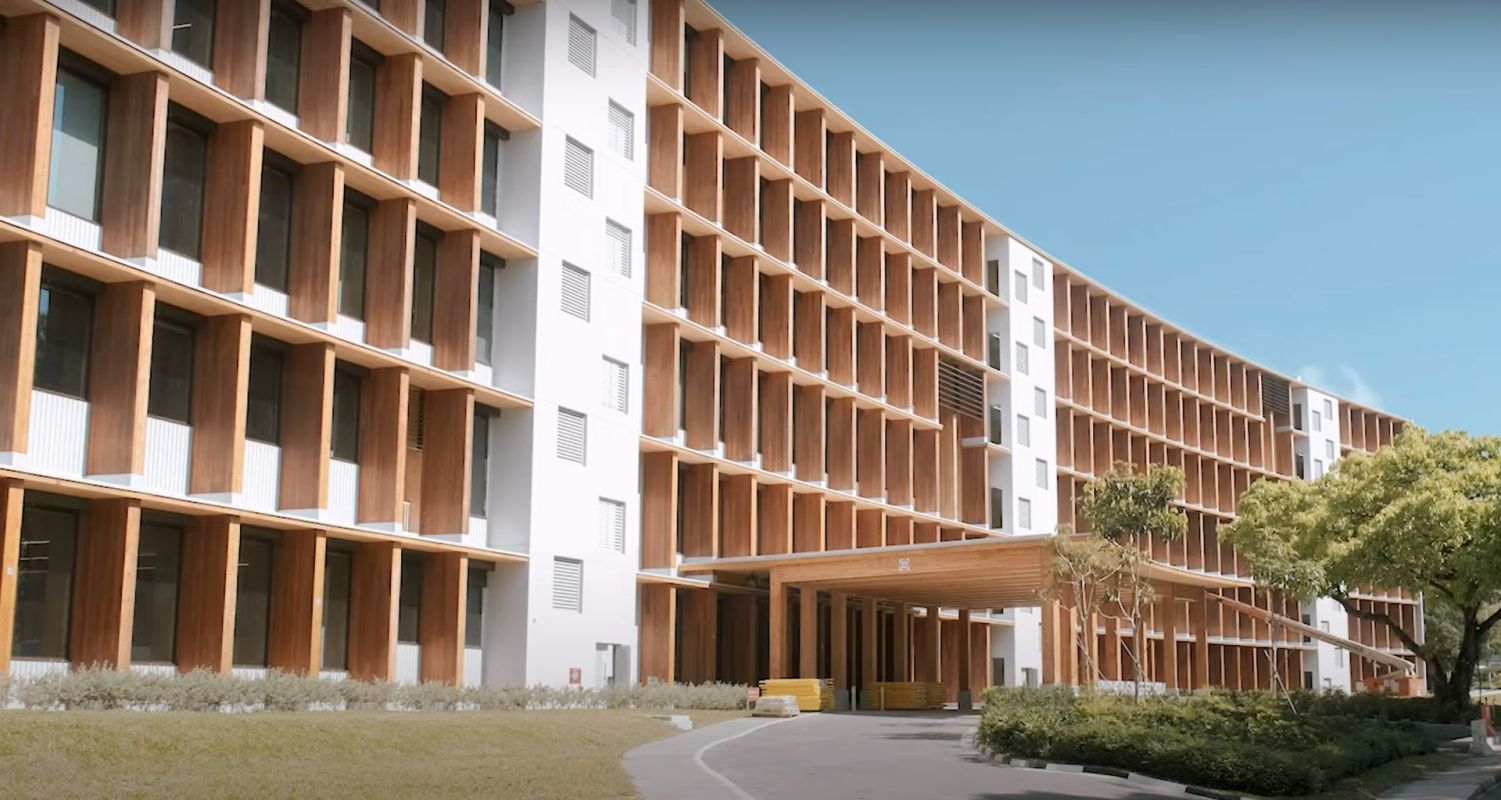In May of 2023, Singapore's Nanyang Technological University opened a new building to house its Business School, New Atlas reported. Called Gaia, this stunning structure is the largest mass timber building in Asia. It demonstrates the incredible benefits of building with timber for saving money and the planet.
What is Gaia?
Gaia is a six-story, 468,000-square-foot building designed by Pritzker Prize winner Toyo Ito & Associates, New Atlas explained. It contains a 170-seat auditorium, 12 lecture theaters, 13 seminar rooms, and multiple classrooms.
Gaia's structure is mainly made up of cross-laminated timber (CLT) and glued laminated timber (Glulam), New Atlas said. Toyo Ito & Associates used concrete only for the stairs, bathrooms, and foundation.
Why does Gaia matter?
Gaia's innovative design makes it not only beautiful and cost-effective for the owners but also healthy for the environment, suitable for the "garden city" of Singapore, as CNN reported.
Photos shared with New Atlas reveal that the building's timbers have been left bare throughout, adding the natural beauty of the wood grain to a sunny, airy design full of windows and skylights. The many open-air areas and the natural lighting make the building inviting for the students and faculty who will use it.
Meanwhile, the mass timber building took less energy to build than a steel or concrete structure, CNN reported.
Find the best HVAC solution to heat and cool your home more efficiently Mitsubishi Electric’s efficient heating and cooling HVAC solutions can help you stay comfortable no matter the weather or region. You can even regulate temperatures in each room with individually controlled all-electric heat pump systems. With an energy-efficient, all-climate system from Mitsubishi, you can reduce the amount of energy needed to heat and cool your home, receive up to $2,000 in tax credits, and get peace of mind knowing you’re choosing rigorously tested, high-quality products. |
New Atlas added that Gaia will continue to produce 2,755 tons less carbon pollution per year than a standard building of this size. That's because the natural insulating properties of wood, plus a few strategic shade structures incorporated into the design, will reduce the amount of air conditioning needed to keep it at a comfortable temperature. Nanyang Technological University will save money, and less air pollution will be produced to meet the building's energy needs.
Finally, the building is also equipped with solar panels and has received Singapore's Green Mark Platinum (Zero Energy) green building award for meeting its own energy needs that way, New Atlas said. This is yet another way to lower both power bills and pollution.
Japanese architect Toyo Ito, who designed Gaia, was proud of his work.
"I always try to envision a connection with — and a feeling of — nature, such as trees and water, in my designs," he told CNN. "The fact you mentioned that it feels like entering a forest shows that my vision came through."
TCD Picks » Upway Spotlight
💡Upway makes it easy to find discounts of up to 60% on premium e-bike brands
He also hopes to see more buildings like it in Singapore in the future. "Singapore is especially quick to make these things a reality," he said.
Join our free newsletter for weekly updates on the coolest innovations improving our lives and saving our planet.














